You must be logged in to rate content!
5 minute(s) of a 22 minute read
5-26-2009
Picture of the roll bar padding. What a royal pain in the a$$ this was to find, custom cut, figure out the right glue to use, etc. Used pictures of the original installation to install the new. Also a picture of the seat. The bottom had to be custom made and matches the original and the seat backs were in decent shape and reused.
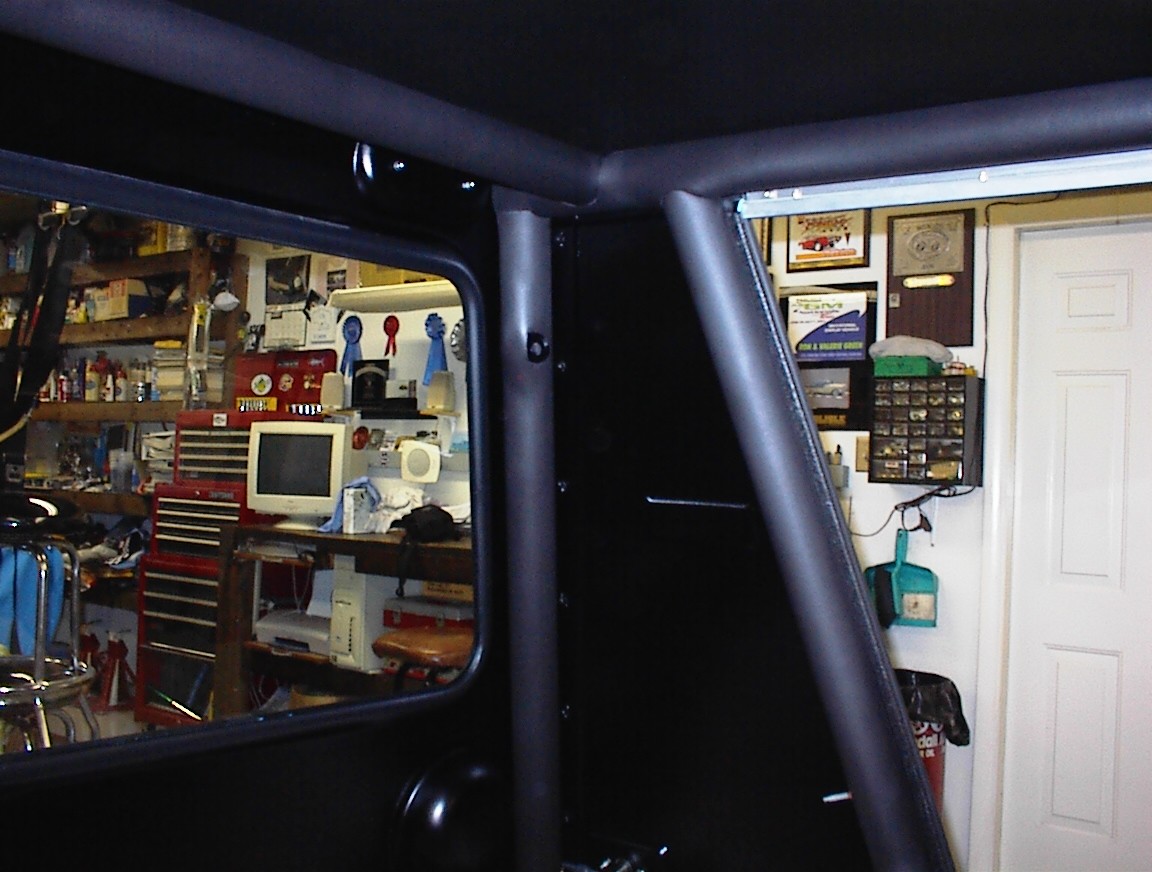
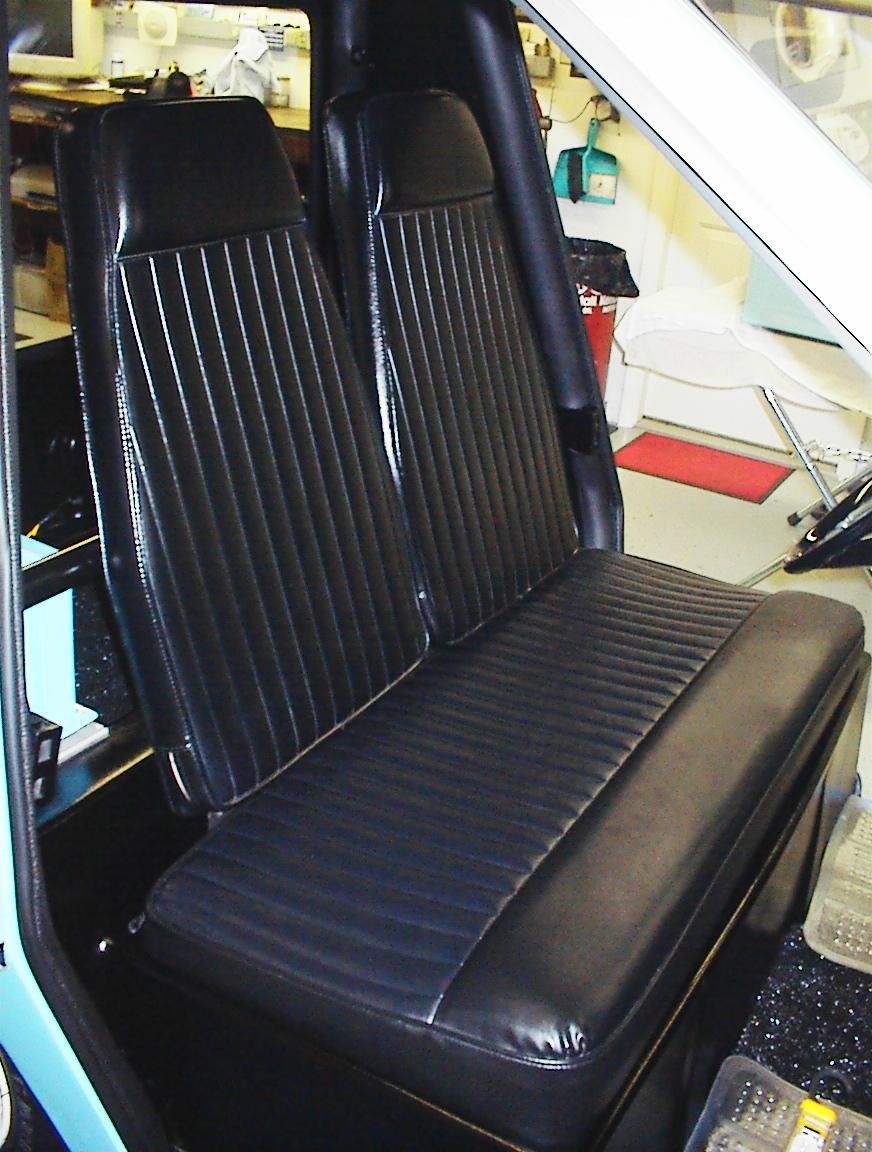
Picture of the refinished steering wheel which was in good condition. Only needed scuffed and painted. Also a picture of the contactor (clickly thing) cover which are fairly rare as many times they got tossed.
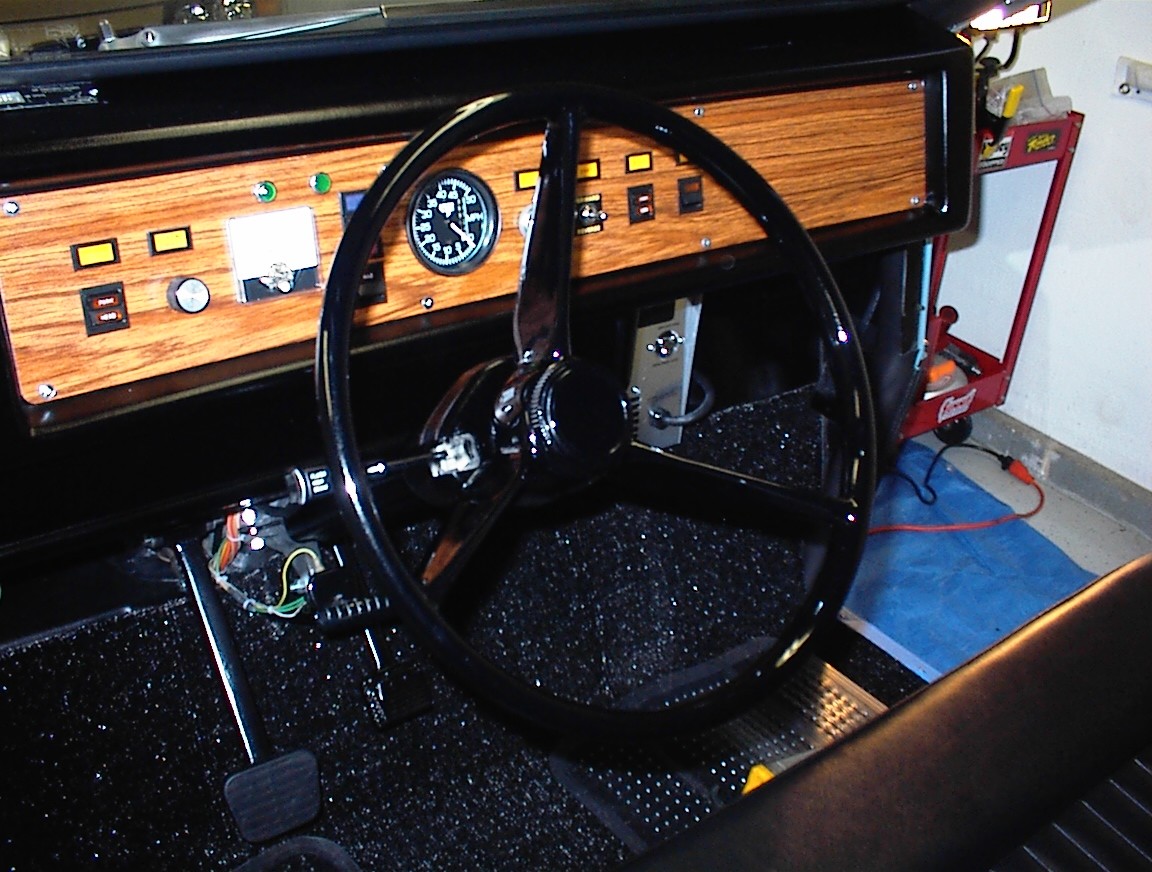
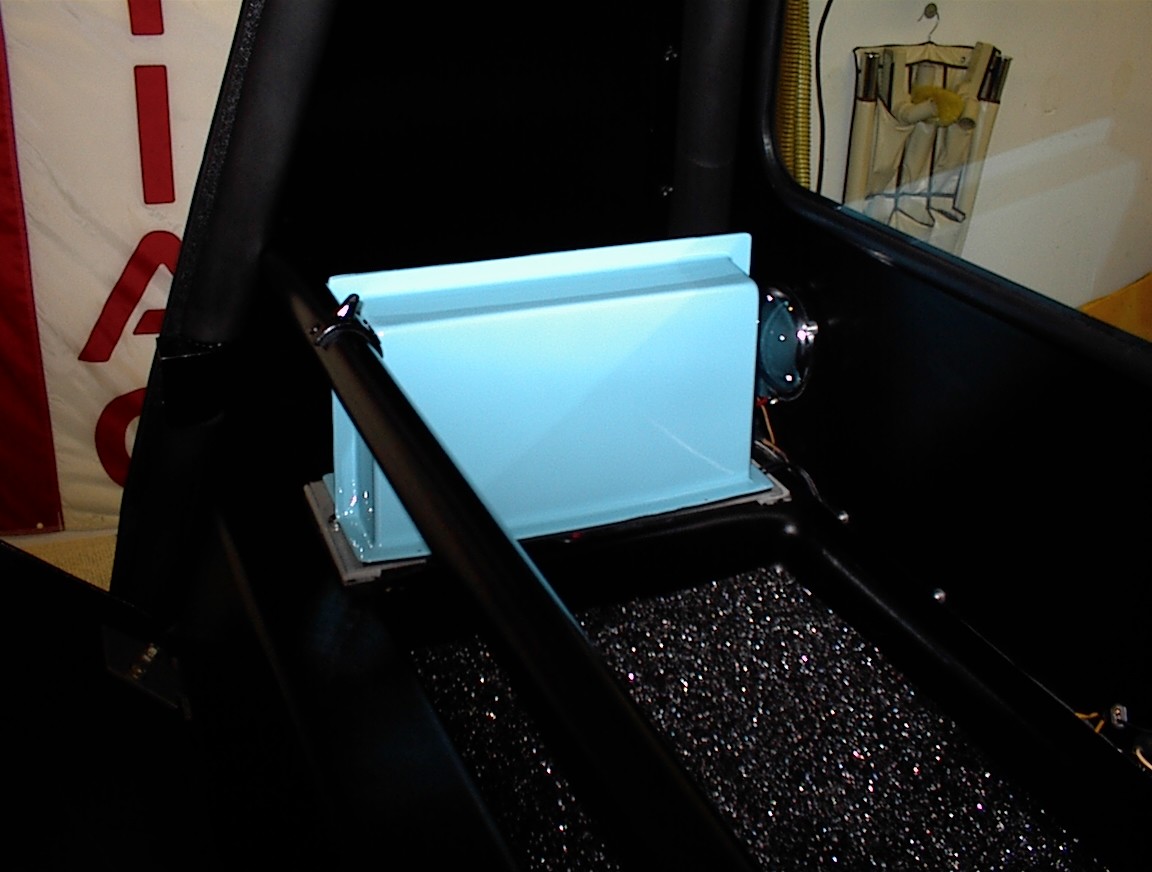
Picture of the side molding which the rubber took months to finally fiqure out what to use to replicate the original. You can also see the receptacle for charging and the hubcap which has the custom made decals installed. The decals arrived Friday afternoon. Also a picture of the finished Citicar's side view. One thing learned is that no matter how much boarding you do to a Citicar you cannot remove all the waves. It just isn't possible as it is way to thin.
Finished with the exception of some tweaking as is typical. Off to the Gettysburg meet Thursday early AM.
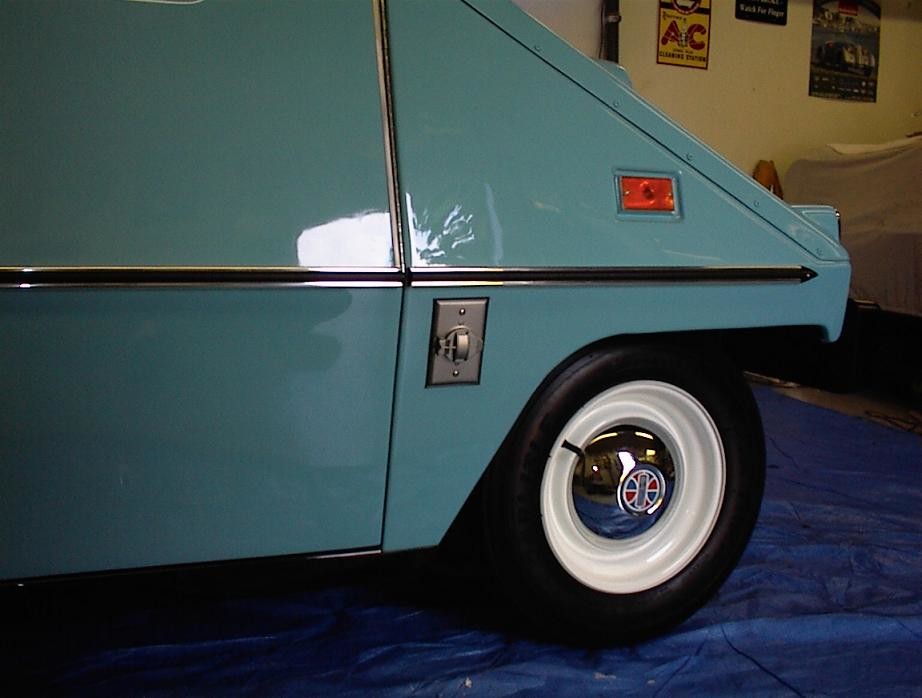

Thanks all for the nice compliments. I just finished yesterday. The wife is somewhat miffed that it is restored and I am entering it for an AACA junior as she wants to drive it to work. She can use it after Gettysburg however I have some things to finish up and check out. I just ran out of time.
Here are some Citicar facts:
The manufacture Sebring Vanguard was formed in 1974 due in part to the mid 70’s fuel crisis. A factory was set up in Florida and approximately 2500 vehicles were built from 1974 to 1976. The selling price in 1975 was about $4500. This was considerably more than the average gas powered car at that time.
In 1977 the company went bankrupt and was sold piecemeal at auction. The principal buyer at the auction was a mobile home manufacturer from New Jersey named Frank Flowers. Frank purchased most of the company in-tact, but not the trade names “Sebring Vanguard or Citicar". In 1978 he proceeded to build a new version of the car using both new and existing parts from the Citicar, as well as incorporating a number of electrical improvements. The overall shape of the new car looked very much like the Citicar and many of the parts are interchangeable. Since Frank did not have the copyright for the original name he called the new car the “ComutaCar”. As luck would have it in 1978 America would have the second major oil shortage of the decade, which resulted in an immediate desire to have more efficient cars. The ComutaCar was an instant success and sold over 4,000 vehicles. The average price for the ComutaCar was $6,500, rather expensive.
By 1980, several things had changed and people were no longer as interested in fuel economy. Perhaps more importantly, the National Transportation Safety Board had increased the requirements for vehicle certification. Even though the ComutaCar would have probably passed the higher standards that all cars in America must pass, the cost for testing and certifying the vehicle line, plus the cost of insuring the manufacturer (from $150,000 to $300,000), proved to be the final death blow.
A speed of 38 MPH is achievable with a range of 30 to 45 miles depending on the terrain (hills, etc), battery condition and the number of stop and go’s. There is an on board charger to replenish the eight 6 volt batteries that are located under the seat. The Citicar has large relays to configure three different voltages and therefore three different speeds for the vehicle. The motor is mounted directly to the differential and there is no transmission. The low speed is about 18 volts, middle speed is 24 volts and high speed is 48 volts. The vehicle is made of ABS plastic, has an aluminum frame with roll cage, weighs a total of 1,250 pounds (less passengers) and seats 2 adults comfortably.
Interesting car! you don't see these every day!
Posted by MPower on 10/12/20 @ 1:49:44 PM